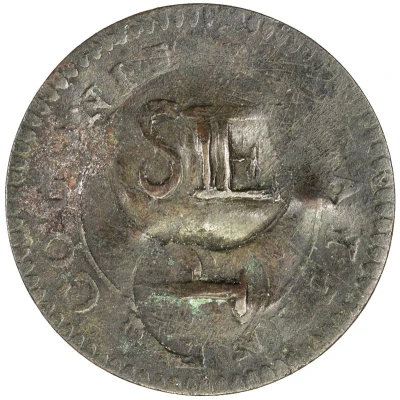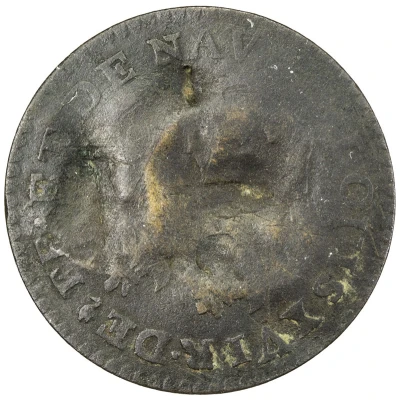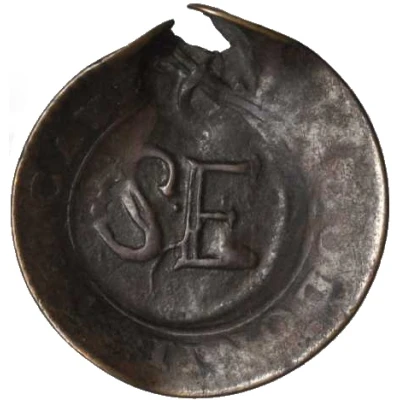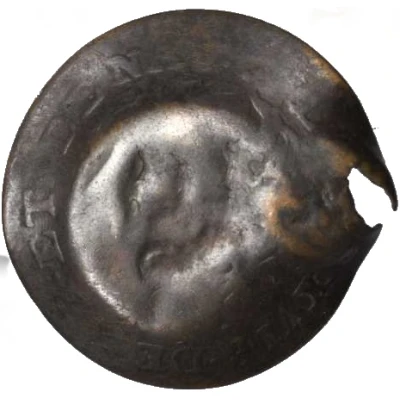


© Stephen Album Rare Coins
1 Stuiver "Cayenne-stuiver" Countermark C12 and C13 ND
| Billon | 1.8 g | 23 mm |
| Issuer | Saint Eustatius (Netherlands Antilles) |
|---|---|
| Type | Standard circulation coin |
| Years | 1809-1812 |
| Value | 1 Stuiver |
| Composition | Billon |
| Weight | 1.8 g |
| Diameter | 23 mm |
| Thickness | 1 mm |
| Shape | Round |
| Technique | Milled, Countermarked |
| Demonetized | Yes |
| Updated | 2024-10-06 |
| Numista | N#106292 |
|---|---|
| Rarity index | 97% |
Reverse
Reverse of host coin with excuse of the countermark
Script: Latin
Edge
Plain
Comment
The 'cayenne stuiver' was a 2 sous coin minted in the West Indies (Colonie de Cayenne) by the French government, that was used on a lot of non-French islands in the region (including Saint Martin, Saint Bartholomew etc) as well.According to Publication 15-12-1797 the 'Cayenne Stuivers' and similar coins, were countermarked with the letters 'SE'. Smith Pierre dit Flamand was sworn in to make the stamps. On 23-1-1798 a new publication warned for counterfeits and stating that only the old marked, old plain, old Danish and Dutch Stuivers remained of value. Later, in 1809, these coins were marked again, this time with a 'P'.
This coin (Scholten 1428) can be distinguished from Scholten 1429a and 1429b by the size of the 'P', which is larger in the Scholten 1428 coins.
Interesting fact
The "Cayenne-stuiver" coin from Saint Eustatius (Netherlands Antilles) is interesting because it was used as a form of currency in the Dutch colonies in the Caribbean during the early 19th century. Despite its small denomination, it was made of billon, a type of alloy that contains a small amount of precious metal, and weighed only 1.8 grams. This coin is a rare and unique piece of numismatic history, especially considering its connection to the Dutch colonial era in the Caribbean.

